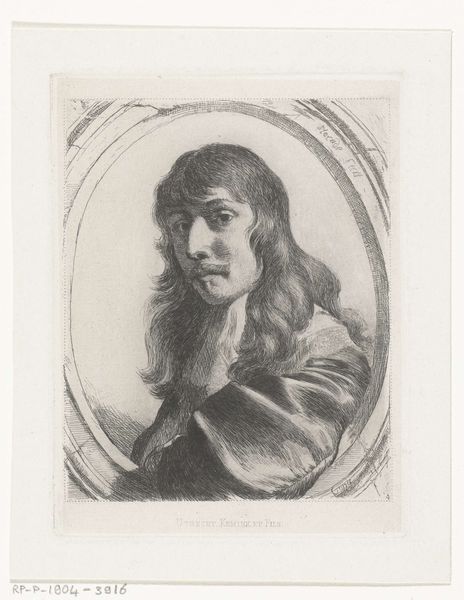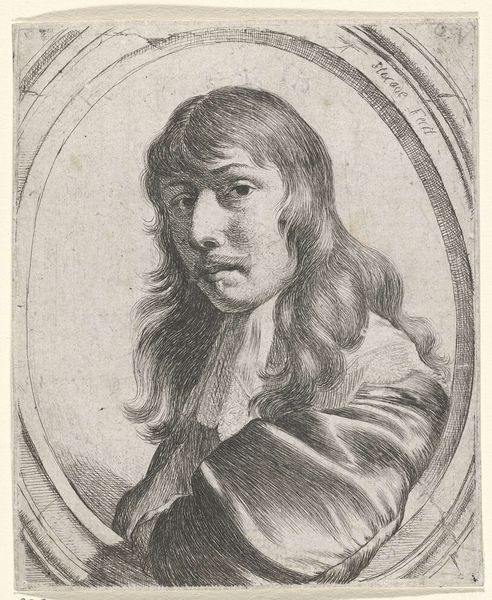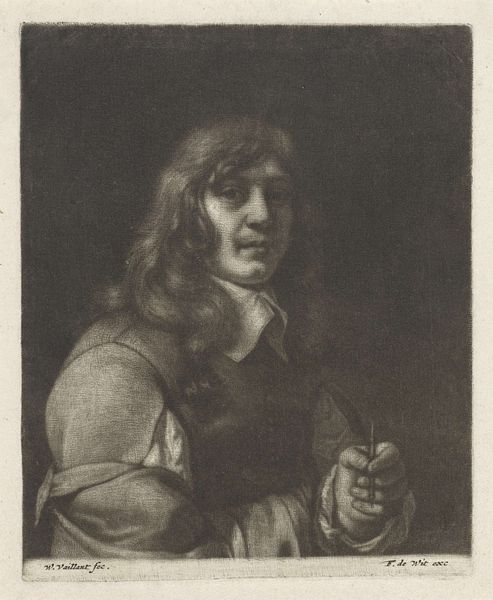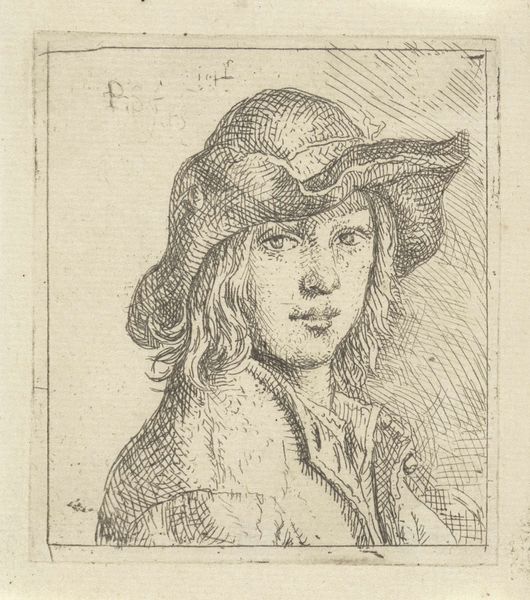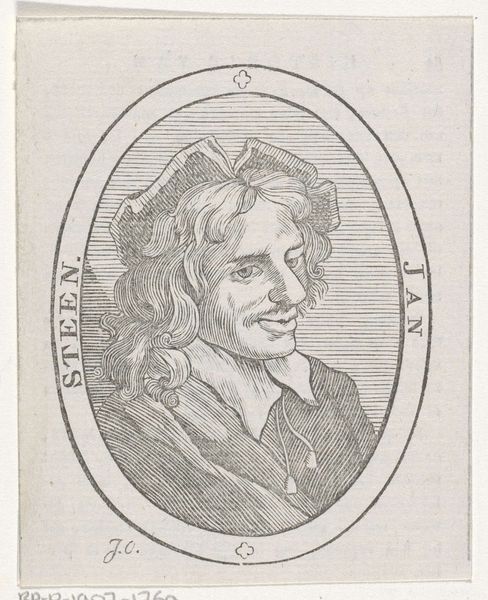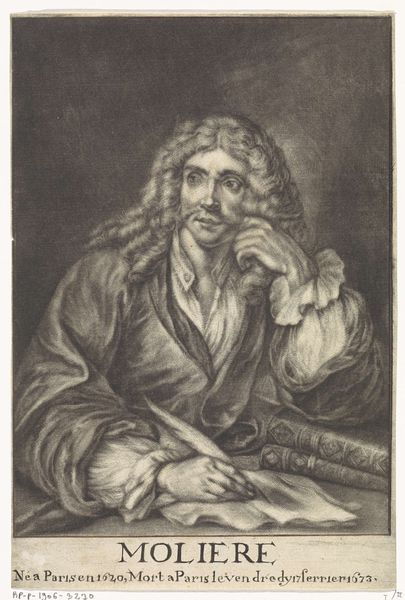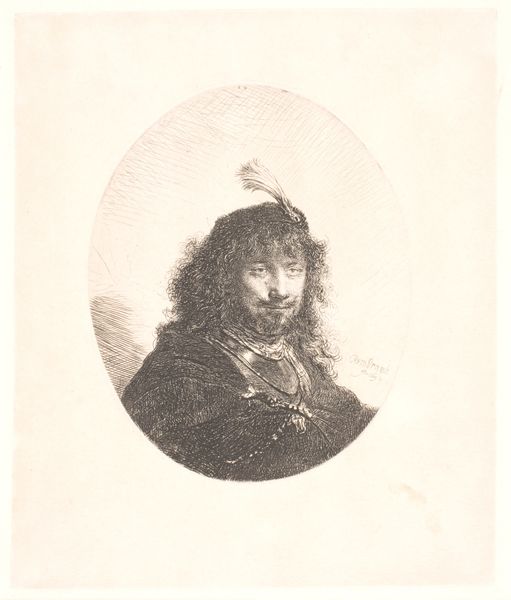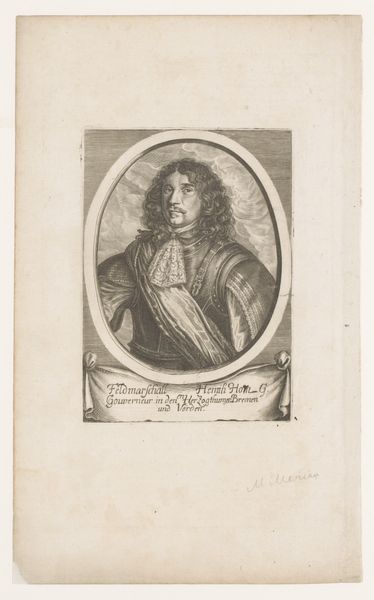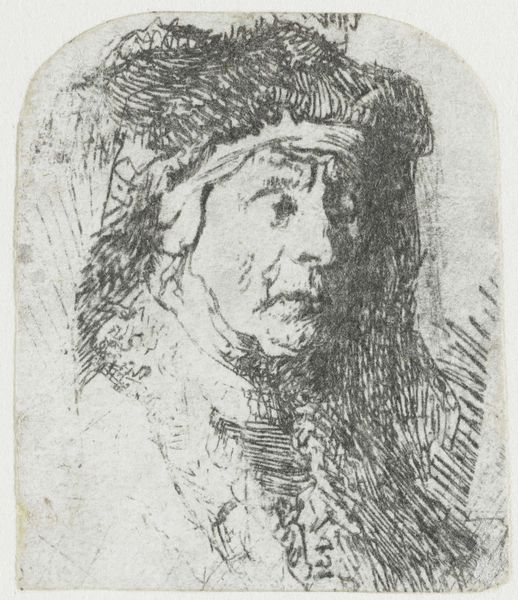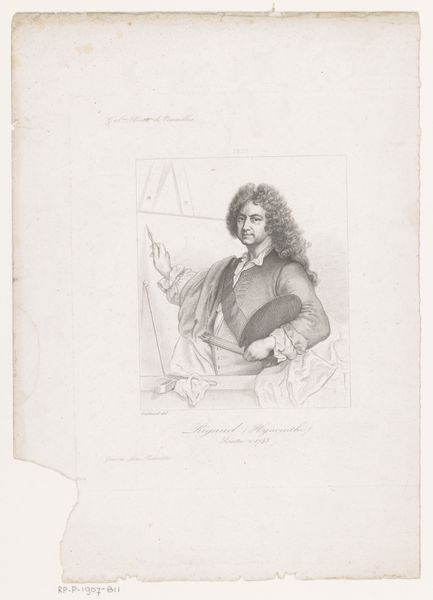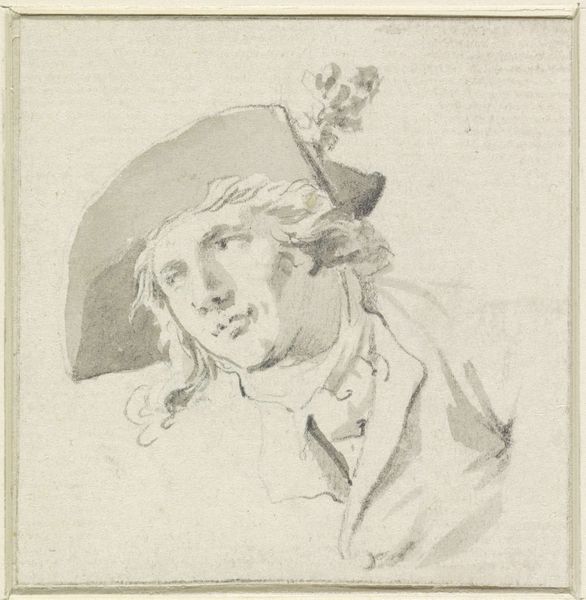
drawing, print, etching, paper, engraving
#
portrait
#
drawing
# print
#
etching
#
paper
#
engraving
Dimensions: height 150 mm, width 103 mm
Copyright: Rijks Museum: Open Domain
Editor: This etching on paper, "Self-Portrait of Nicolaes van Helt Stockade," made sometime between 1841 and 1881, feels quite intimate. The textures achieved through the engraving are fascinating. What’s your take on this piece? Curator: The lines defining form here, created through the labor-intensive etching process, speak volumes. Consider the social context of printmaking during this period. Prints democratized art; were these portraits more broadly available to the public? Editor: That's an interesting point. It makes you wonder about the intended audience. Curator: Exactly. And notice how the oval frame isn’t just decorative, it’s *made* – built through labor and material. It's part of the overall construction, isn't it? The artist *made* this frame to present their face. Think of the economics involved - paper, ink, the tools required for engraving. These materials defined access and availability. Does this self-representation challenge traditional notions of artistic production and the boundaries between 'high art' and craft? Editor: It definitely pushes against a romantic idea of artistic genius. The sheer work involved in the production process is so clear here. Is that what you mean? Curator: Precisely! How labor and materiality impact our understanding of art. Is the artist's skill more important than the product, or vice versa? Or something in between? How did artists like Stockade participate in and shape the commercial networks of art? These are critical to contextualize the artwork. Editor: I hadn't thought about it that way, about labor being such an important factor! Now I see it less as a portrait of an individual and more as a result of social and material circumstances. Curator: That is a shift in perspective that allows a more robust understanding of the art from the time. I learned something today as well!
Comments
No comments
Be the first to comment and join the conversation on the ultimate creative platform.
